4,000-year-old 'shaman' burial near Stonehenge has a golden secret
Stone tools found in a 4,000-year-old grave near Stonehenge have traces of gold on their surfaces that indicate they were used to fashion gold ornaments.
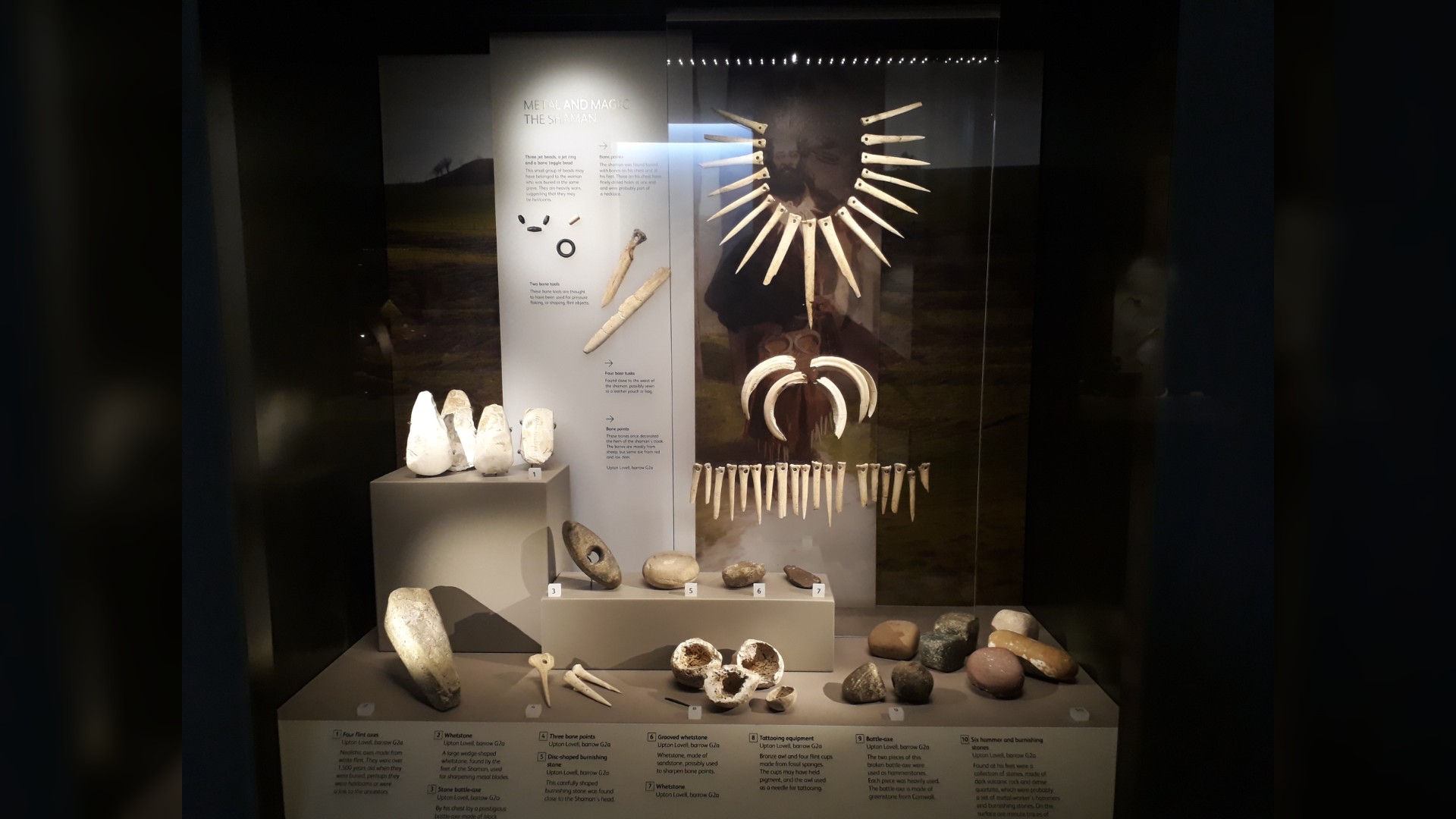
About 4,000 years ago, two people were buried near Stonehenge with grave goods described as a "shaman's costume" when they were discovered in the 19th century. But a new analysis of stone tools also found in the grave reveals they have traces of gold on their surfaces, indicating they were used to craft the precious metal.
So, were the buried individuals shamans, goldsmiths or something else? "Grave goods are more than representations of a person's identity," scientists wrote in a study published Dec. 15 in the journal Antiquity. These artifacts hint at the complexity of ancient identity, and that roles like "shaman" and "goldsmith" don't adequately sum up individuals who may have represented many different things to a Bronze Age community.
"We tend to think of people in simple categories — a shaman, a metal worker, a magician, an important person — but this modern western approach should be put to one side when we turn to think about life in the early second millennium B.C," Timothy Darvill, an archaeologist at Bournemouth University in the U.K. who wasn't involved in the study, told Live Science in an email.
Related: Stonehenge: 7 Reasons the Mysterious Monument Was Built
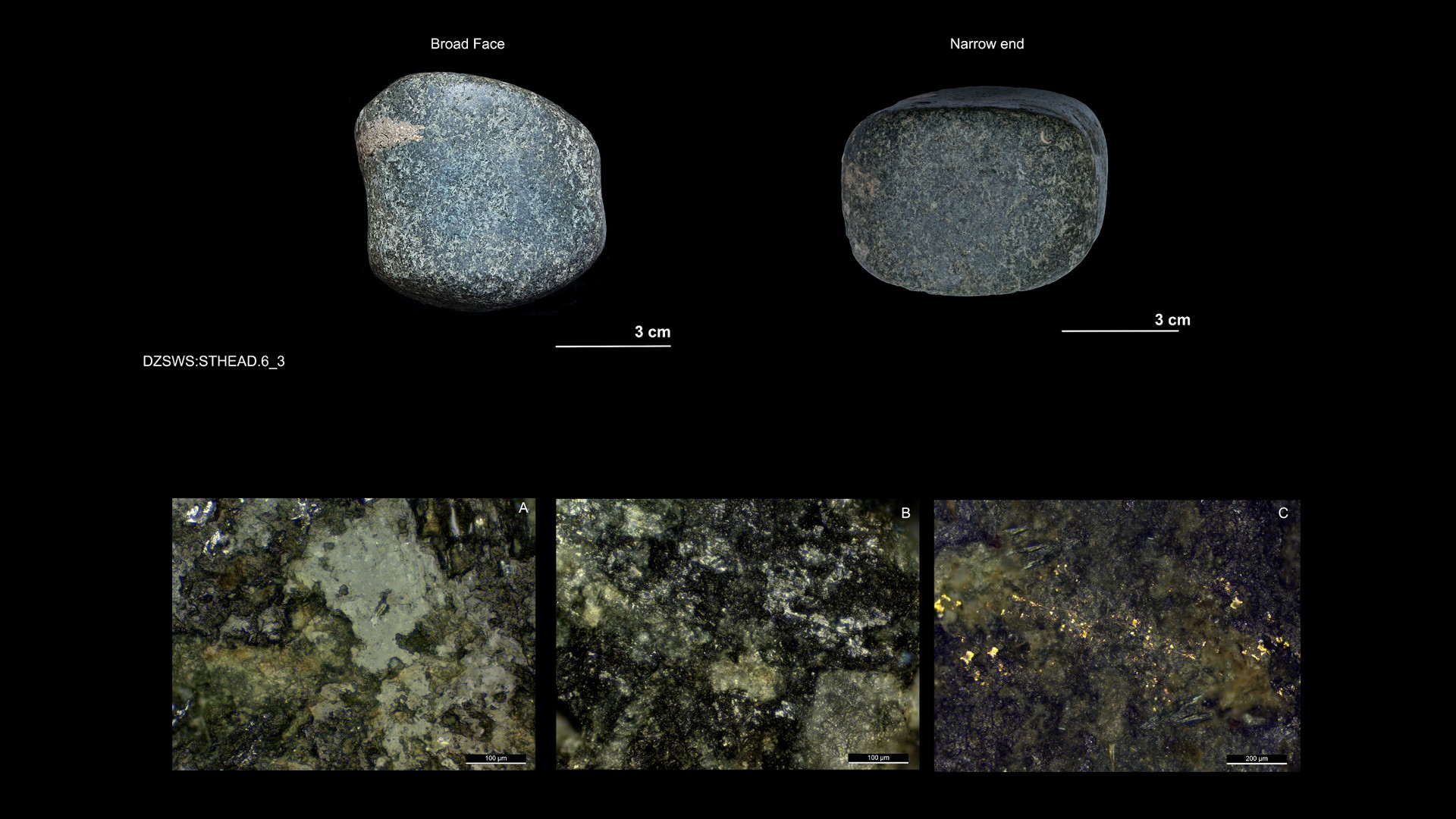
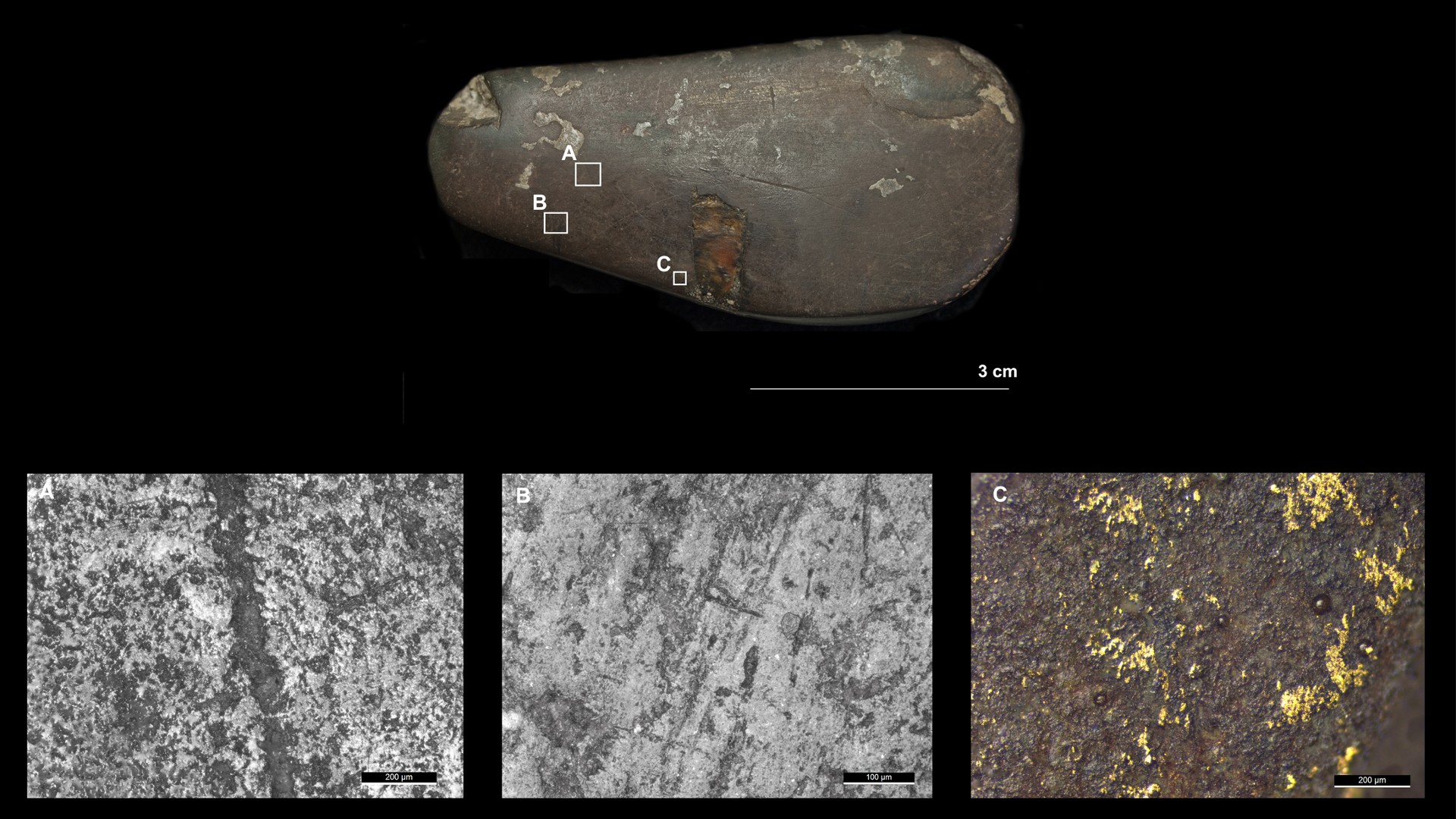
In 1801, archaeologists found the assemblage of Bronze Age artifacts, including the stone tools, in a barrow or burial mound from about 1800 B.C. near the village of Upton Lovell, about 10 miles (16 kilometers) west of Stonehenge.
The assemblage includes flint axes, a necklace of beads of polished stone and dozens of bone points — possibly from another necklace and the fringe of a garment. The collection, which is now on display at the Wiltshire Museum in the town of Devizes, was interpreted at that time as the grave goods of a "shaman" or holy man.
The sexes of the two people buried in the barrow have never been determined, but they were interpreted in 1801 as the shaman and his wife.
Get the world’s most fascinating discoveries delivered straight to your inbox.
The latest study, however, strengthens the idea that at least one of them was famed for their ability to create ornaments from gold and other precious materials, the study's lead author Rachel Crellin, an archaeologist at the University of Leicester in the U.K., told Live Science.
"Both of those people are associated with a toolkit that would allow them to make incredibly fine and beautiful objects that took a great deal of skill," she said.
Grave goods
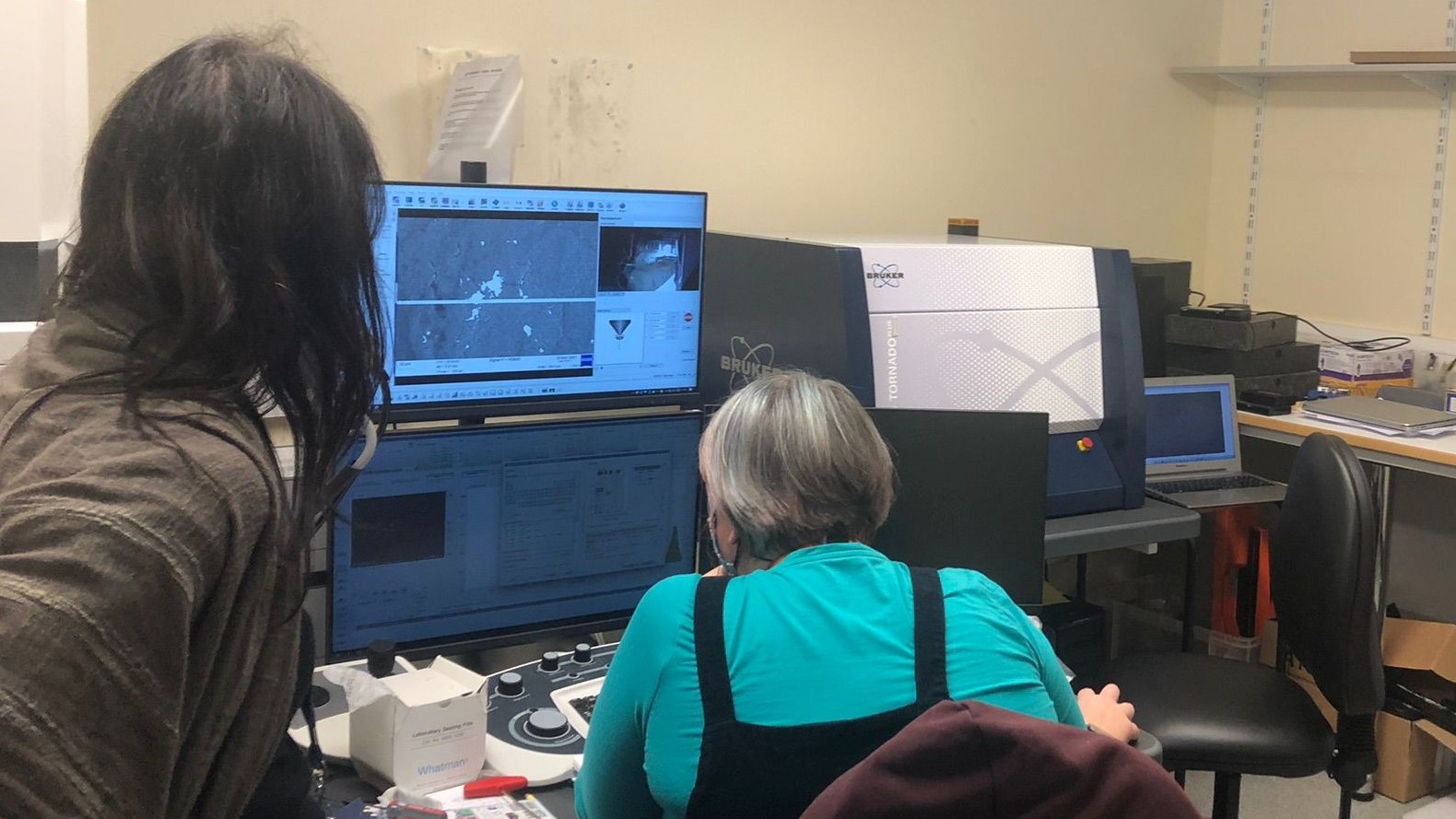
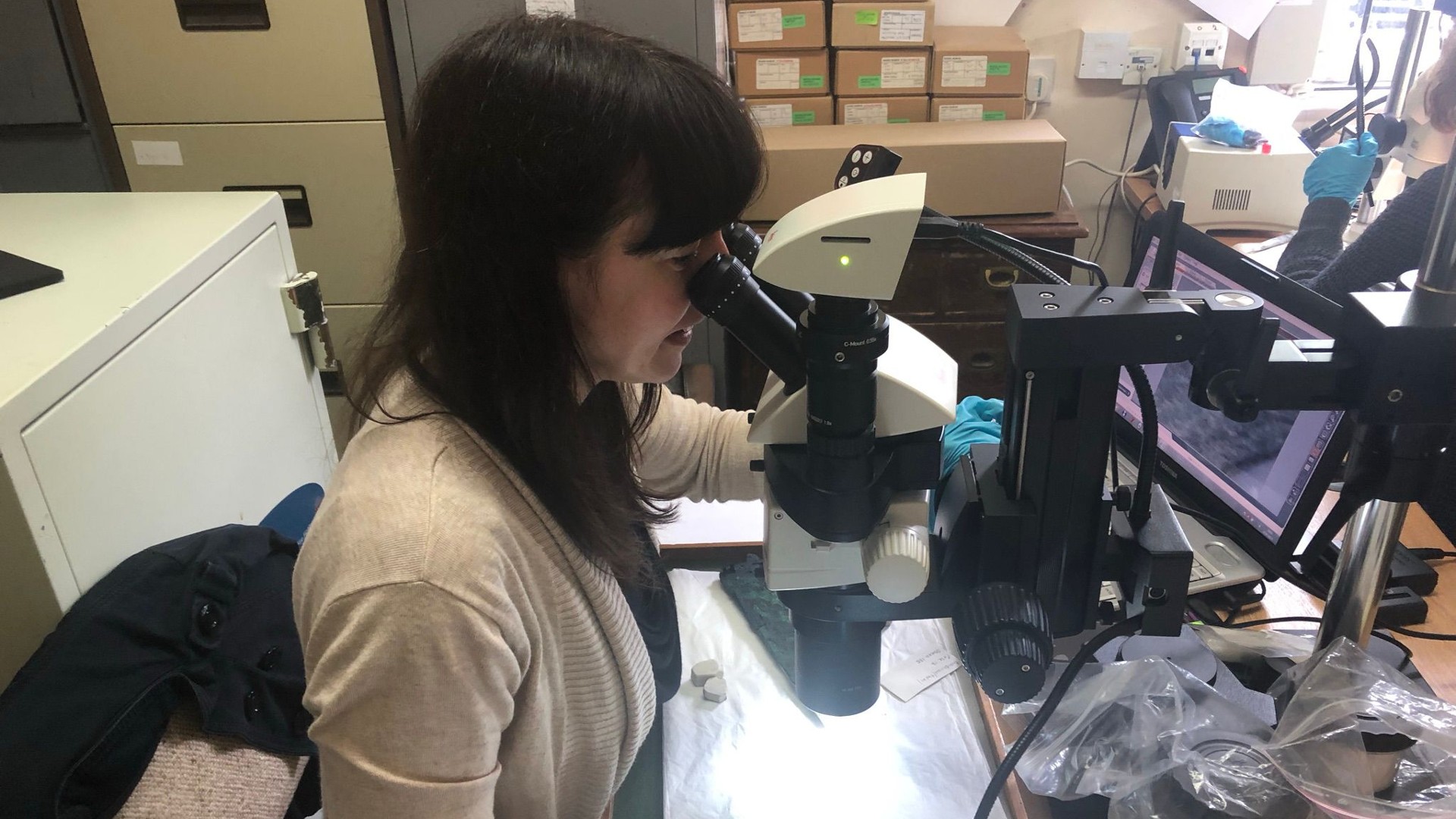
Researchers discovered the traces of gold on the stone tools during a reanalysis of the artifacts using modern archaeological techniques, which included using a scanning electron microscope and an X-ray spectrometer to verify the presence of any residues and determine their chemical make-up.
The study confirmed that the traces of gold on the tools are prehistoric, and that they have similar impurities to other sources of gold used in Bronze Age Britain.
Crellin said that the wear on the stone tools also shows they were used in different ways to shape gold and a variety of other materials, such as amber, wood, copper and jet — a finely grained, semi-precious form of coal.
Small ornaments, especially items for personal dress like belt-hooks and clasps, were often made during the Bronze Age with a "core" of such materials, which would then be covered in a thin sheet of gold, she said.
Ancient barrows
The barrow where the tools were found lies only a few miles from another burial mound of about the same age, known as the "Golden Barrow," which was excavated a few years later.
Both barrows are among the many prehistoric graves found within a few miles of Stonehenge, which strengthens the idea that the entire area served as a prehistoric necropolis over thousands of years.
The Golden Barrow contained the remains of a single person who had been buried with several gold ornaments and other precious objects, including a necklace of more than 1,000 amber beads.
Crellin said the researchers haven't yet determined if the gold traces on the tools match the gold objects from the Golden Barrow, but she hopes further analysis will determine their geographic origins. "That's the million-dollar question," she said.
Archaeologist Susan Greaney of Cardiff University, who wasn't involved in the study, said that it shows how making fine artifacts might have been regarded as magical.
"The ability to transform other objects by the delicate and skilled process of covering them with gold sheet may have been seen as a magical or ritual process, a secret method known only to a few people," she told Live Science in an email. "This research shows how metalworking was closely related to magical, ritual and religious beliefs."
Tom Metcalfe is a freelance journalist and regular Live Science contributor who is based in London in the United Kingdom. Tom writes mainly about science, space, archaeology, the Earth and the oceans. He has also written for the BBC, NBC News, National Geographic, Scientific American, Air & Space, and many others.


